Travel brochures advertise Lombok as “the way Bali was 30 years ago,” untouched and unspoiled. In other words, those venturing the island east of Bali will find equally enchanting beaches, surf, and culture.
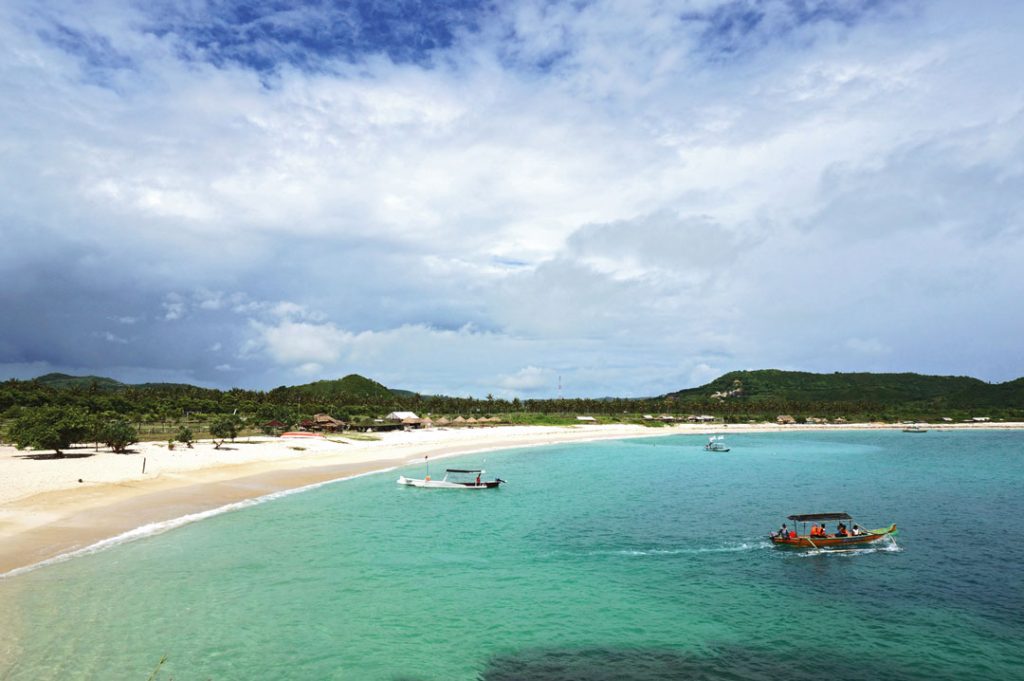
I remember arriving in Lombok five years ago at Teluk Kodek, an area in the northern part of the island surrounded by swaying palm trees and sleepy villages. I took the scenic route down to the touristic Senggigi, entertained by the bird’s eye view of the beaches below, passing empty beachfront lands with signboards saying “For Sale”.
Last month, I arrived at that same spot but noticed that parts of the beach just steps away from the jetty had been layered with cement paving blocks so that motorbikes and cars could access the seaport. It was a sign that things had changed since my last visit. So I had to wonder, what did those empty plots of land up for sale near Senggigi look like today?
I decided not to go the same route as the last time, and instead made my first Lombok stop at a traditional market in Medana, near an area called Tanjung, east of Teluk Kode. At first glance, the traditional market appeared to be a bewildering and disorganised mess, with no clear order to the way the stalls were arranged. This is precisely the way a great traditional market should be, I thought to myself. I wandered around through the ‘chaos’, enjoying how unspoiled everyday life was here, untouched by modernity. The items sold at the market were numerous: meat, fish, fruit, vegetables, spices, household items, and even clothes. Many traders simply placed their goods on blankets on the ground, some in the middle of the sidewalks. Ranks of the horse-drawn carts, locally known as cidomo, lined the sides of the market, giving it that unquestionably Lombok feel.
What intrigues me the most is the island’s tribal people, the Sasak people, and to witness a bit of their life in their small villages. And the first Sasak village I visited was Sukara, a village known for its weaving culture. A local guide took me in to the villager’s houses and showed me the entire process of the weaving: growing the cotton, spinning the thread, brewing the natural dies, and weaving on the looms. Even more interesting about Sukara is the village’s tradition that states a young woman must be able to master all parts of the process to later weave her own bridal cloth. If she fails to do this, she cannot get married.
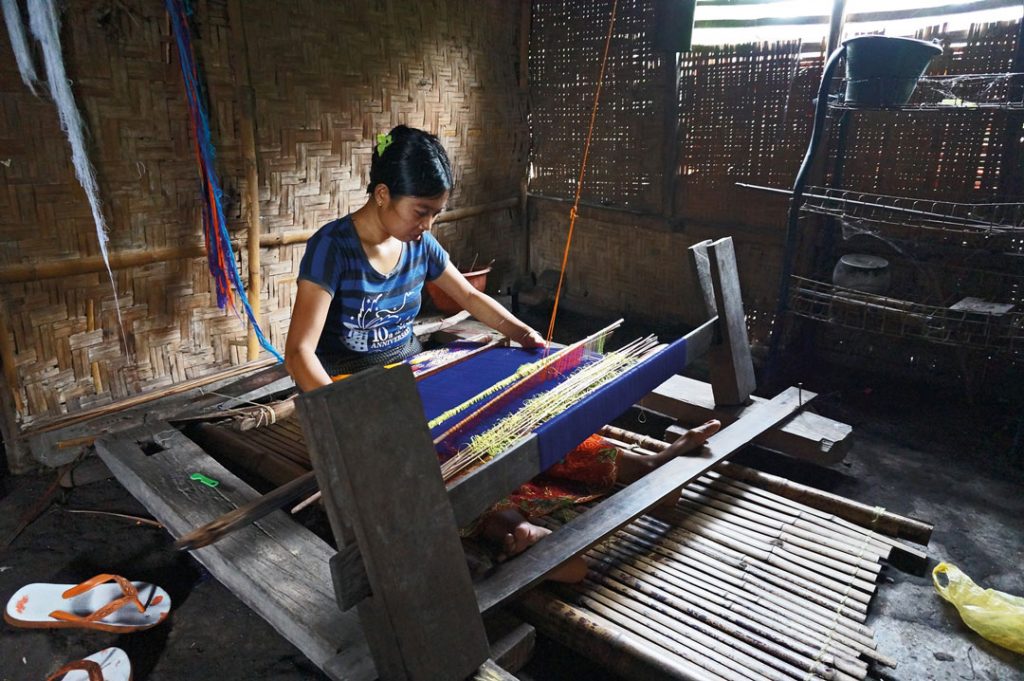
After an enlightening trip to the humble Sukara, I took the road back towards Teluk Kodek, passing the same area as I did five years ago. The area was still relatively empty, but quite a number of the “For Sale” signboards were gone – and by the looks of it, new beachfront and ocean view hotels were coming soon to the area.
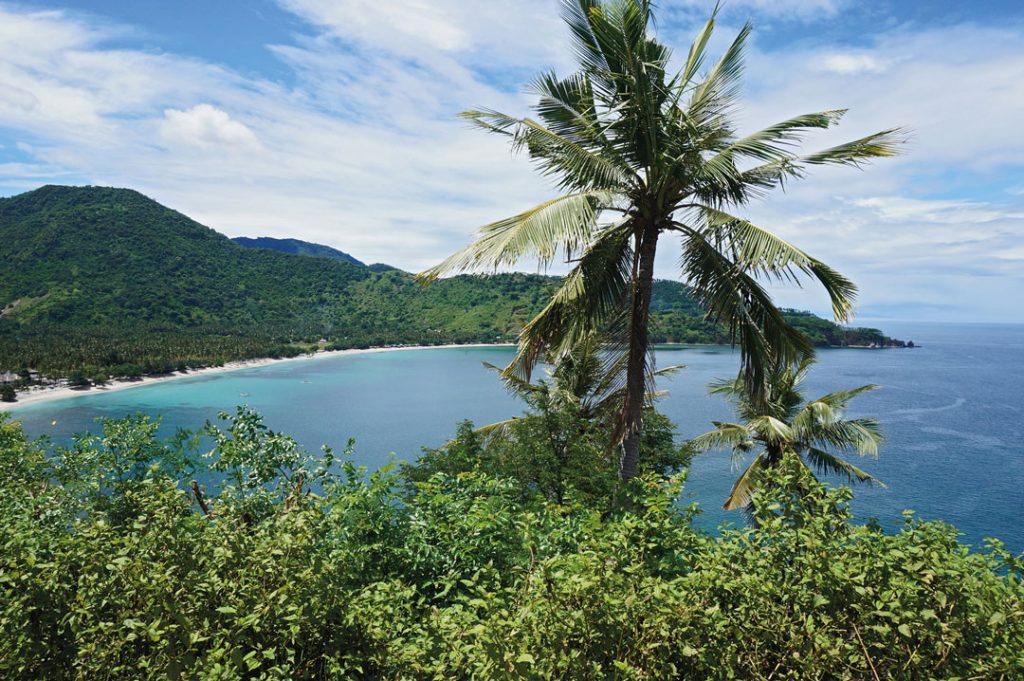
I made a quick stop at a “sunset point” in Malaka, halfway from Teluk Kodek to Senggigi. From here I could see the distant, famous Gili Air, Gili Trawangan, and Gili Meno, as well as crystal clear waters below. A fresh, cold coconut water cooling me off from the intense Lombok sun.
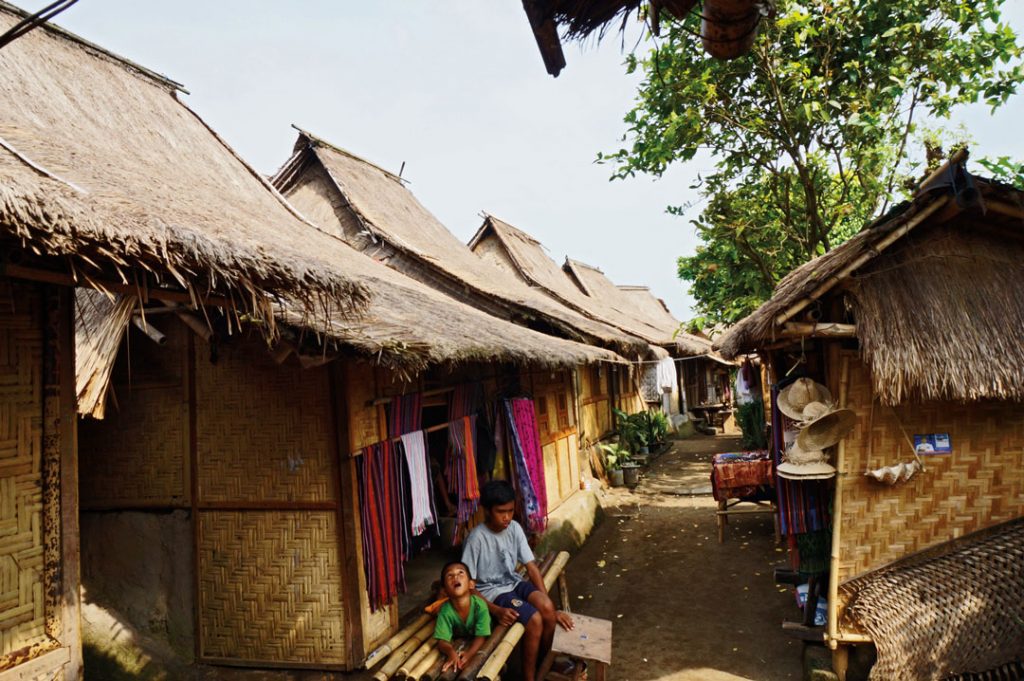
My journey continued to Sade, another Sasak tribal village in Lombok. Sade isn’t really an isolated tribal enclave cut off from the outside world but rather a living traditional village struggling to survive in the modern world. The villagers supplement agricultural income by selling their weavings and showing visiting tourists around their beautiful hilltop village. I was surprised by how organised and well-thought out the short guided tour of Sade was; visitors are not allowed to wander around the village on their own, poking their heads into people’s houses or interrupting the village life.
I was greeted by a volunteer guide, a local Sade villager, working for modest donations who led me through the village. Upon entering the village, I signed a guestbook and was asked for a small contribution towards the maintenance of the village. After that I was led through the village’s narrow cobbled paths, showed examples of local houses, a thatched mosque, and the rice barns. I immediately noticed that all of Sade’s roofs were thatched; it seems the donations donations to the village were being well spent, as the village was constantly repairing homes and replacing roofs.
The thatched-roof houses were beautifully lined with an adobe stucco of mud and cow manure. That may sound off-putting, but if you’ve traveled your fair share than you might know that magic adobe mixture is used the world over to create smooth moulded floors, walls, platforms and benches. The architecture was full of fascinating details including a strange wall decoration made with dried fish tails. Moving through, I was able to glimpse a bit of Sasak daily life. Spinners spun yarn; weavers wove colourful lengths of cloth; kids skipped along the paths while the elderly lay out under the shady rice barns; the occasional goat or chicken wandered by.
Sade was quite an interesting short side trip while in southern Lombok, especially for people who may not be moving further east. I was impressed at the respectful setup and the thought put into preserving village architecture and how they managed to retain a traditional atmosphere.
I then made my way to Kuta Beach, also on the southern part of the island. Not to be confused with its trendy cousin in Bali, this Kuta is a quiet little stretch of sand in an isolated cove. But different from the Kuta Lombok I visited five years ago, you can now find ranks of homestays along the area – herds of buffalo munching on the grass are still there, though. Hawkers on the beach, who are mostly children, can be a bit pushy at times, asking you to buy bracelets, necklaces, and other souvenirs. You can always say no them if you’re not interested, just do it politely.
To the west of Kuta are a series of beautiful beaches and bays hidden behind headlands and rolling hills, providing peaceful and secluded spots for picnics and swimming. This area also provides plenty of opportunities for exploring beaches and coastal scenery of breathtaking beauty.
To the south, you’ll find the pristine white-sand beach of TanjungAan. Sun worshippers will definitely find their paradise here, for the long-stretched, white-sandy beach provides the playground they long for to achieve that perfect tan! The area is surrounded by picturesque hills, with one that can be easily accessed for you to enjoy the 360-degree view of the stunning natural green and blue surroundings. But when the sun finally gets to you, you can rent a wooden umbrella with braided straw roof to cool off. On the beach you can have cold drinks and fresh coconuts from the local vendors, or go to the rows of restaurants in the area for a tropical lunch.
Anyway, the drive down to the south coast is an interesting rural tour of small villages and farming communities. You can observe fields of tobacco, corn and peanuts that line the roadsides and farmers till the fields using antiquated ploughs pulled by large water buffalo. If you’re lucky, you’ll run into a group of locals dressed up to the nines in their traditional attire.
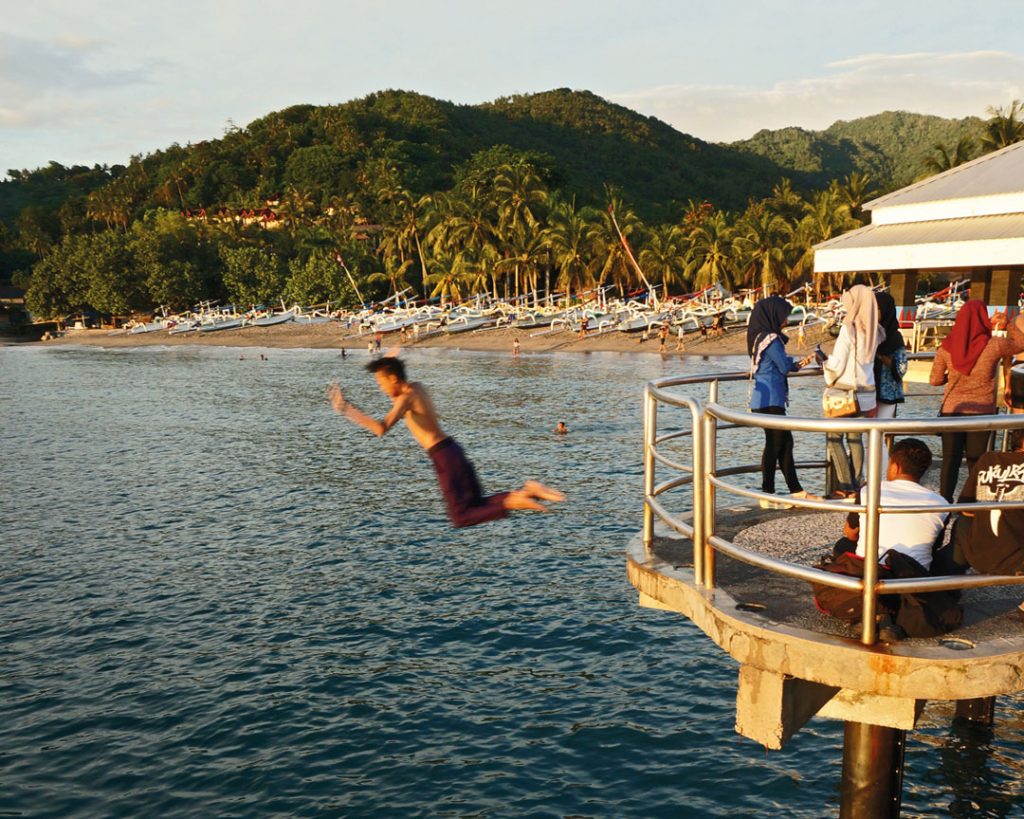
Hours later, I found myself back in Senggigi, counting down to the last light of the day. Both the residents and tourists alike flock the Senggigi Beach pre sunset time, with local children swimming and diving from the high-platformed jetty into the sea. There are beach front restaurants, especially in the area of Senggigi Art Market, where you can have cold beers or just coffee, whilst observing the sun slowly and gracefully sink into the horizon.
Restaurants offering international menus can be found along the main road or inside the beach resorts and hotels here. Some old hotels and beach resorts seemed to have gone through renovations, with some others taken over by new management and given new names.
But you should go to the capital city of Mataram to really get a glimpse of the local nightlife in Lombok. In addition to the mushrooming coffee shops, Mataram is now filled with a number of parks, providing a visual appeal for visitors and especially residents. At night time, these parks, such as Taman Sangkareang, beam with lights, creating a gathering space especially for the locals to kick back and relax.
Street food is one of the main attractions at the parks. Offering local delicacies, you can find food carts lining the parks across Mataram. Children, too, can have an enjoyable time, for there is normally a dedicated area for the little ones to play, whilst the adults indulge in the sumptuous steamed corn (a favourite amongst the locals). If you’re not adventurous enough, you can skip the street food and head to the nearby restaurants to sample Lombok’s famous Ayam Taliwang (spicy grilled or fried chicken served with rice).
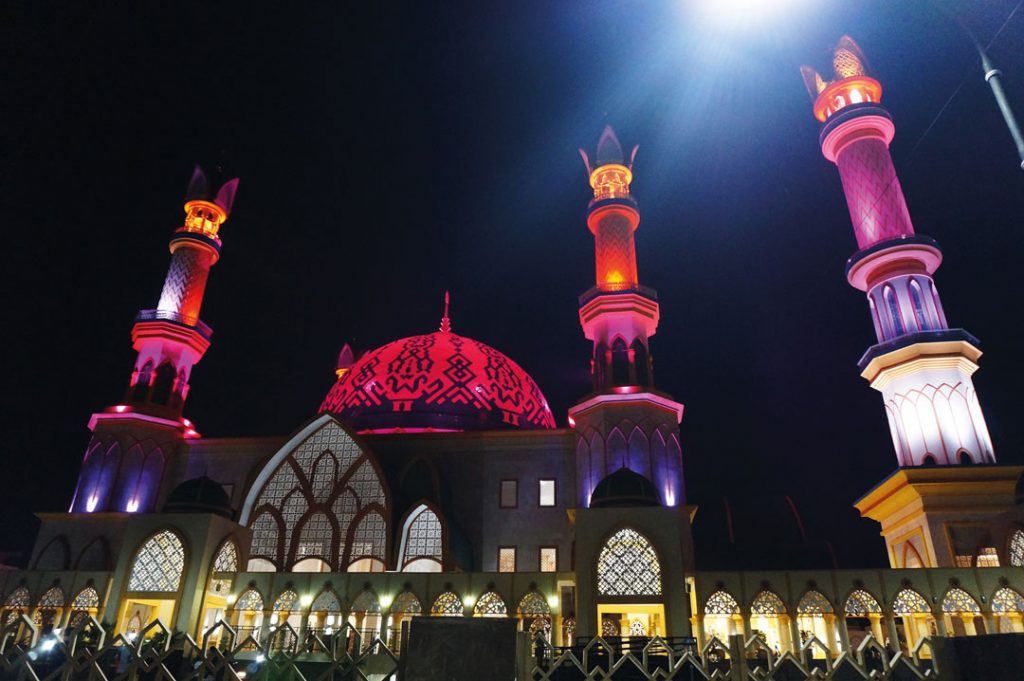
Significant road and sidewalk improvements have taken place in Mataram, making exploring the city at night time on foot a convenient affair. In addition to the parks, the Mataram mosques make an interesting attraction to visit at night time. The Islamic Centre of Mataram as an example; this landmark is showered with colourful lights once the sun has set. The centre was built to promote pilgrimage tourism. Bearing a 99-metre high tower, you can climb up the centre and enjoy the bird’s eye view of Mataram.
For the longest time Lombok remained in the shadow of its neighbour, Bali. It was only in 2018 after a series of terrible earthquakes when Lombok made the headlines, of course, for the wrong reasons. Much of the northeast of Lombok is still in recovery, with local communities and businesses lending a hand.
The tourism industry suffered hard after the earthquake, despite the fact that much of the island remains safe and just as beautiful as ever. Today, this wild and rugged island welcomes tourists and visitors with open arms, and you can be assured a truly exotic experience, from its local villages, beautiful coast and white sand shores.
TRAVEL TO LOMBOK
Daily flights from I Gusti Ngurah Rai International Airport in Bali to Lombok International Airport are offered daily by Garuda Indonesia, Citilink, Wings Air, and Lion Air. The airport is located 15 minutes away from Kuta, but a bit further out from the centre of the tourist hub in Senggigi.
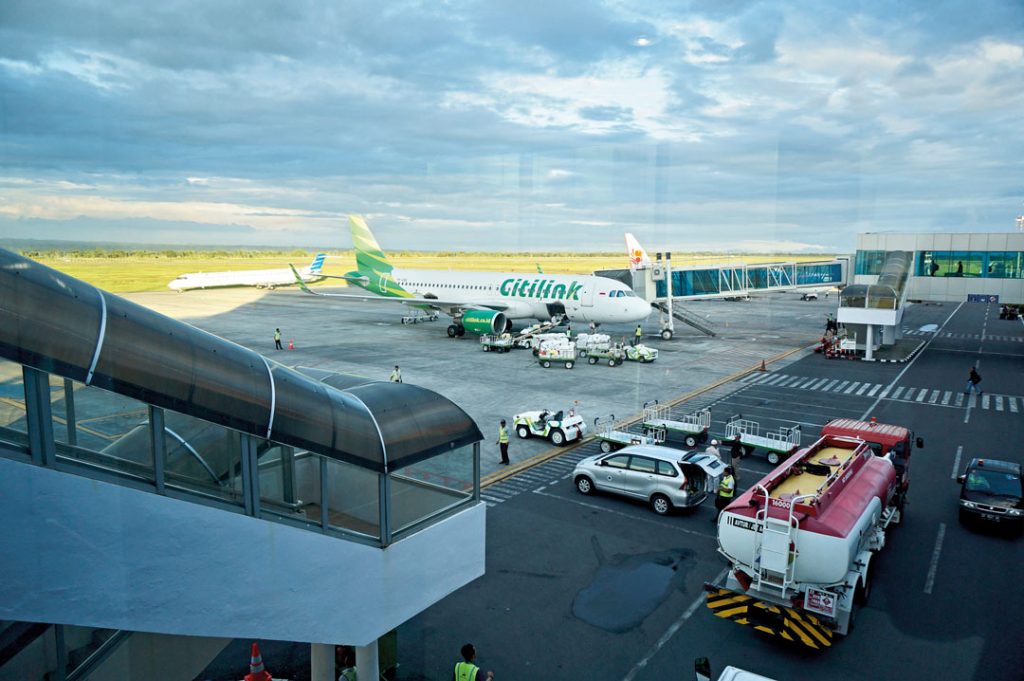
SLEEP IN LOMBOK
I highly recommend Hotel Tugu Lombok in the quiet Sigar Penjaling village. Unlike any other hotel in Lombok, Tugu is beyond a place to stay, it is a destination, where time stops and moments are created. Nothing is standard in Hotel Tugu Lombok, and nothing is like anywhere else on the island or in the world. Spectacularly designed and beautifully grand, Hotel Tugu Lombok features ancient statues of Hindu gods scattered among the sun loungers, and the sea is clear enough to see blue fish swimming past your knees. Be prepared to be woken by birdsong and pad into the outside bathroom with huge river-rock boulders and oversized rain shower – redefining shower in nature – at the Bhagavad Gita, suites of the “Song of Heaven”.
The location of Hotel Tugu Lombok is undeniably magical, on the pristine white sand beach of Sire, facing the open ocean, providing crystal clear waters and breathtaking views of Mount Rinjani. It was built as a testament of the harmony of pluralism in Lombok in the past, based on the ancient manuscript of Negara Kertagama, which was found in Lombok in 1894.
Hotel Tugu Lombok
Sire Beach, Sigar Penjaling village, Lombok
+62 370 6120 4444
www.tuguhotels.com
In the heart of Senggigi, Sheraton Senggigi Beach Resort has been a landmark of hospitality on Lombok Island, preferred by discerning international travellers for its excellent service and prime location. The resort offers 154 exclusive retreats; each fitted with the Sheraton Signature Sleep Experience and a spacious balcony or terrace boasting views of the ocean or the resort’s tropical garden. The resort also houses two beachfront villas with private pool and direct access to the beach. The resort’s three culinary outlets, KebunAnggrek Restaurant, BawangPutih Poolside Restaurant, and Senja Lounge & Dine appeal to all diners’ tastes with their offerings that range from typical Indonesian flavours to international delicacies.
Sheraton Senggigi also showcases an alluring outdoor pool with breathtaking ocean view for an invigorating swim or a refreshing dip while sipping a refreshing cocktail. To keep you energised every day, you can visit the fully equipped Sheraton Fitness, including its sauna and Jacuzzi. The Kids Playground provides an all access pass for the little travellers to experience some engaging and captivating activities during their stay. Step into the resort’s Laguna Beach Spa, and you will find yourself far away from hectic life and relish in serenity. Here you can bask in a perfect sunset and ocean breeze while being pampered by relaxing treatment for physical and spiritual rejuvenation.
Sheraton Senggigi Beach Resort
Jalan Raya Senggigi Km. 8, Senggigi, Lombok
+62 360 69 3333
www.sheratonsenggigi.com
Overlooking the beautiful white sand and turquoise bay of Kuta Beach, Novotel Lombok Resort and Villas is located only 20 minutes from Bandara International Lombok – Lombok’s international airport. Featuring 102 beautiful rooms, suites, traditional Sasak and private pool villas set amongst tropical lush gardens, Novotel Lombok is the essence of relaxation and tranquility. All 77 superior and deluxe rooms are beautifully appointed using local textures and modern design. The resort also offers 10 traditional Private Sasak Villas, 5 Garden Pool Villas and 10 exclusive Private Pool Villas in 1 or 2 bedroom configuration.
Like the rest of the resort, the dining experience at Novotel Lombok Resort and Villas is relaxed and refreshing. Restaurants and bars are located in an idyllic spot to enjoy the tropical beach on the southern shore of Lombok facing the Indian ocean. Enjoy the sea breeze in a casual, relaxed atmosphere with a range of cocktails, coolers and tropical drinks at the resort’s Breeze Bar. Alternatively you can treat your beloved one for a romantic dining on the beach, where sumptuous wine and fresh seafood or steak with local specialties await.
Novotel Lombok Resort & Villas
Pantai Putri Nyale, Pujut Lombok Tengah, Kuta, Lombok
+62 370 615 3333
www.novotellombok.com







